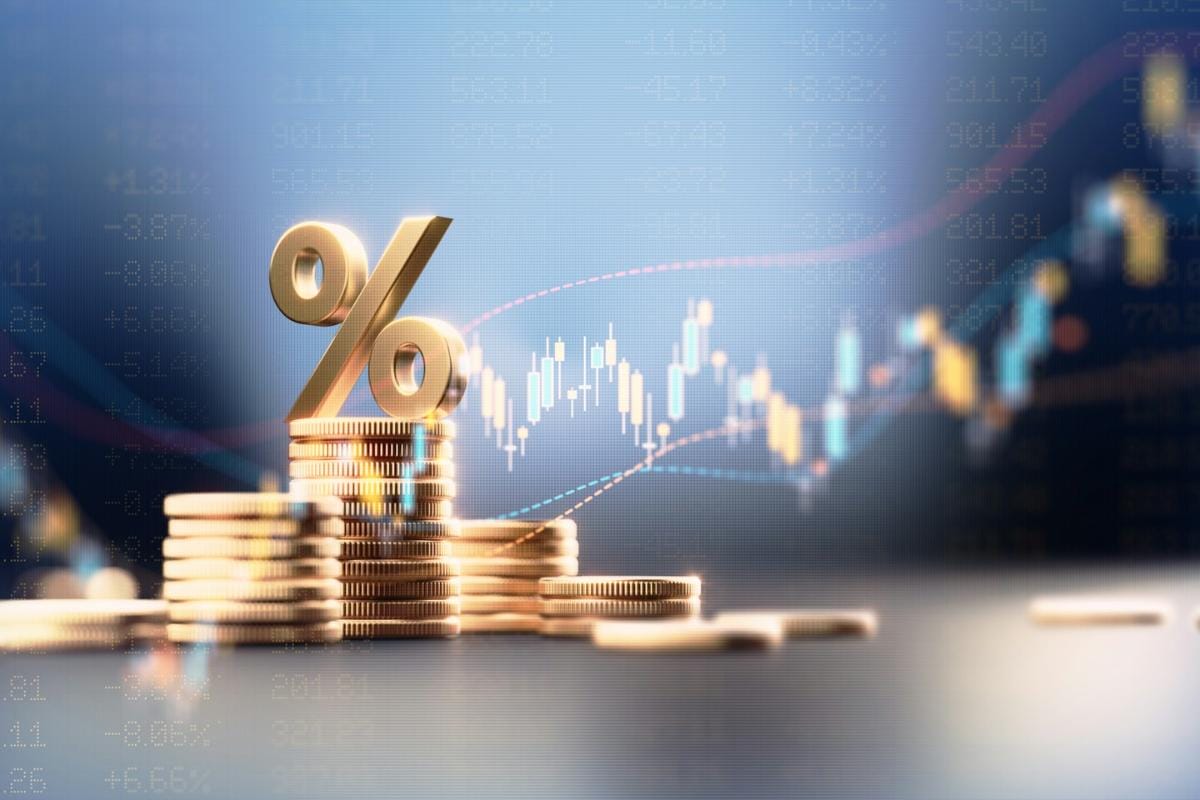The US market has dropped 10% since February, with a recent 2% fall driven by negative consumer sentiment and fears of stagflation. Investors are shifting focus to safe havens such as gold, which reached a record $3,128 per troy ounce, and bonds, with Treasury yields easing to 4.2% amidst growing concerns about the US economy. Tom Stevenson, Investment Director at Fidelity International, comments on what’s driving investments this week.
Wednesday is when the US will impose broad-based secondary tariffs on top of those already announced on specific countries and sectors. It will mark a significant escalation in Trump’s tariff policy and investors are voting with their feet. The US market had already fallen by 10% since its February high but last Friday it fell by 2% and the Nasdaq by 2.7% as an apparent stabilisation crumbled off the back of gloomy data and consumer sentiment that raised fears about stagflation in the world’s biggest economy.
The market turmoil picked up momentum again after the weekend in Asia and Europe, with Japan down 3.3% as the President confirmed that tariffs would be levied across the board, with none of the concessions that he had hinted at last week. Investors are assuming the worst and taking cover.
Korea also fell sharply and markets in Taiwan and mainland China and Hong Kong were also well down. Europe and London were down but less so than in Asia. The US’s approach to tariffs has been so unpredictable that no-one is prepared to second guess what will actually happen come Wednesday, which has been dubbed Demolition, as well as Liberation, Day. It’s a question of take cover first and assess the danger later.
Investors are starting to price in the growing likelihood of a painful cocktail of recession coupled with stubbornly high inflation. What has surprised many is the extent to which the President seems prepared to take a hit to the economic prospects of the US as well as the rest of the world. The nature of protectionism is that it hits American businesses and consumers just as hard as those in the US’s rivals. Tariffs raise prices and curtail confidence and growth for the country levying them as much as for the apparent targets.
So, the big question facing investors now is whether a 10% market correction prices in all the damage to come or whether there is worse to come. For global investors, a related question is whether the rotation out of the US and into other markets like Europe and China can offset the pain or whether America sneezes and the rest of us catch a cold.
What can history tell us?
History offers little help after a 10% correction. If you plot every such correction from the history books you end up with a wide dispersion of subsequent returns. Sometimes the market recovers, sometimes it goes on to fall further.
One indicator to watch is credit spreads, the extra income investors demand for lending to companies rather than governments. During a recession, investors require more compensation, yields on corporate bonds rise, and the spread widens. Tight spreads are a sign of confidence but can also indicate complacency. If heading towards a recession, spreads will widen further. Currently, the bond market is not flashing red.
Other fundamentals are also in the ‘nothing to see’ zone. The next quarterly earnings season will reveal how the backdrop affects company results. Last year earnings rose in the low double digits, and similar growth is expected for 2025. However, forecasts may not remain immune to a slowing economy.
Last year’s earnings growth was coupled with optimism from investors, measured by the multiple of earnings they were willing to pay for shares. Since the market peak, the valuation multiple has eased from nearly 23 times expected earnings to just over 20. Prices have gone from expensive to less so but still vulnerable and higher than the long-term average, which is unusual in an economic slowdown.
More important than overall market fundamentals are those for big technology stocks. The Magnificent Seven currently trades at about 30 times earnings, down from 42 a month ago but still stretched as profit forecasts moderate. The market will struggle to hold up if these dominant companies continue to fall in value.
Investors flock to safe havens
A key difference between the last major market downturn in 2022 and today’s correction is that investors have found places to hide. The fall in share prices is mostly a US story, despite this week’s slide in other markets. Rotation out of the US into markets like Europe and China has protected investors with diversified portfolios. Other assets such as gold and bonds have provided a smoother ride than just investing in the US stock market.
The gold price has risen to a record $3,128 a troy ounce, supported by factors beyond its role as a safe haven during geopolitical and economic uncertainty. Central bank buying, retail buying in India, and other influences have driven the gold price up. Meanwhile, Treasury yields have eased to 4.2% from a peak of near 5% as concerns about the US economy grow. The Federal Reserve may have to ease policy to support growth despite persistent inflation, and investors are starting to price in lower rates.”















